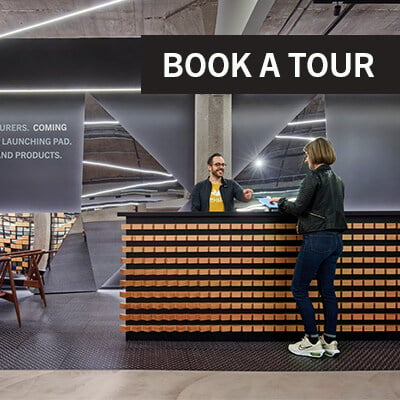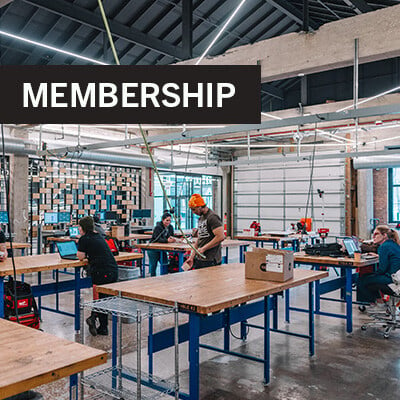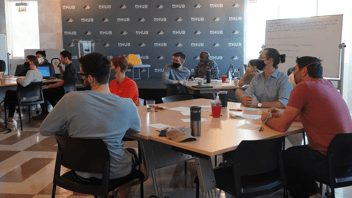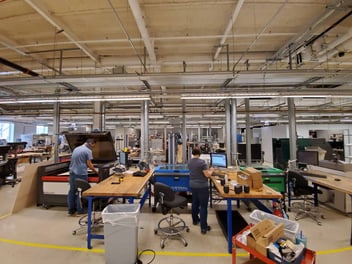Product innovation is about growth.
Through the lens of longevity, product innovation is also about the long-term survival of the business. The pace of change continues to accelerate, and companies need to innovate to stay relevant. The average life of a company on the S&P 500 is down to less than 20 years as of 2020 and has been continuing to decline. Companies that are successful in their core market especially need to keep an eye on major trends and shifts and the need to innovate in that context.
Economically speaking, the country may be headed toward recession, but that doesn’t mean innovation should be ‘put on a backburner. While some decision-makers in leadership will decide to cut back on innovation during a recession, smart money actually invests in innovation during a downturn. Powering product innovation during a downturn means a manufacturer will be ready to launch new products right as things are starting to take off, while their competitors are just ‘waking up’ to the marketplace upturn. Customers are also more likely to adopt new innovations during stressful times than when the status quo is comfortable.
Decide your company wants to innovate.
An organization must decide they want to innovate at the company level, beyond incremental product improvements. This entails confronting the challenges associated with that choice. These challenges include confronting the “innovator’s dilemma” (The Innovator’s Dilemma: When New Technologies Cause Great Firms to Fail – Clayton Christensen), developing a larger customer solution-focused innovation practice, and addressing potential gaps in their organizational capabilities.
Dedicate a portion of your budget to innovation.
Successful businesses frequently focus their R&D budgets on incremental innovation within their core markets. They are very well aware of these market’s needs and have optimized their product development function to these needs. Small- to mid-size manufacturers, for example, have systems and processes to get projects through their development pipelines and it is easy to dedicate all of their R&D to those pipelines. While this feeds near-term growth, it runs the risk of missing important substitute offerings and/or larger growth opportunities outside the core market. In order to drive long-term growth, businesses must strategically decide to practice a broader approach to innovation. It is essential to separate and prioritize this innovation function outside of the day-to-day demands of the business-critical pipelines. Smart companies dedicate about 5% of their research and development budget to focus solely on innovation beyond their core.
Develop Necessary Organizational Capabilities
When a company has a core competency, it means they’re really good at doing whatever it takes to make its product and peoples’ experience with that product the very best it can be. The people within the business are paying attention to technological developments within their industry that can directly apply to their product and/or manufacturing processes.
In the context of innovation at the company level, these skills and attention can however be blinders to larger trends and problems. New approaches may well require new skills, technologies, and capabilities that the organization does not currently have.
Decide if your company will handle product innovation in-house or if you need a product innovation partner
The likelihood is that the organization does not own all of the necessary capabilities to innovate at a strategic level. Therefore, the company needs to decide what to acquire and what capabilities are best acquired through partnership. Critical capabilities include a broad technology awareness outside of core products, the skills to apply those technologies, and the equipment needed to test and implement them.
Awareness of other technologies. What technologies being employed (or developed) in other industries can be pulled into your specific manufacturing niche? What advantage(s) can be gained? Will the utilization or incorporation of these technologies enable you to expand your market share? Or create new/related markets? Manufacturers can hire people to think broadly and do the necessary research, or work with some firms on the initial front-end brainstorming of what is possible. It doesn’t hurt to do some initial ‘homework’ before approaching a product innovation partner. When evaluating a product innovation partner, make sure they have a solid understanding of innovation practice. There are many books on this topic, and Bill Fienup, mHUB Co-Founder and VP of Innovation Services could answer your questions on this topic. Any talent you hire should have knowledge of those processes and proven innovation practice experience.
- People with a broad range of skill sets. Any mid-size manufacturer, if setting up an internal innovation group, will probably not be able to staff more than a handful of people. So how do you find people with such a wide range of capabilities to cover all the possibilities? Also, traditional design firms have their own specialties, so a manufacturer would need to know what they want to do before selecting a design firm as a product innovation partner. This is where mHUB Hardtech Development services is unique – manufacturers can take advantage of the breadth of skills available within the hardtech ecosystem. mHUB is uniquely positioned to help manufacturers innovate in a range of areas because they can tap into talent with a broad set of skillsets. The mHUB member base includes over 500 highly skilled engineers, designers and developers that are available for contract research and development projects. mHUB oversees and coordinates innovation teams on behalf of clients through its in-house Hardtech Development department. So instead of a manufacturer trying to find four people with a wide knowledge base, mHUB Hardtech Development services can hand-pick people with specific skillsets for any given project.
- Equipment. Product innovation requires equipment. Internal groups are not typically able to purchase every piece of equipment needed to perform iterative prototyping and testing. Does the product innovation partner you are evaluating have the equipment needed to prototype or test what you want? This is another area where collaborating with mHUB Hardtech Development services offers some unique advantages over traditional design firms. With a 65,000 sq. ft. innovation center, mHUB has 11 labs for prototyping and product development with a variety of equipment for electronics, 3D printing, laser cutting, metalworking, and more.
The Bottom Line
All manufacturers should be thinking about innovation. Businesses should approach innovation as they would any core competency. Whether the economy is up or down, innovation is the lifeblood of positive growth, plus protection for the business against getting flanked or displaced by alternative technologies.
If you have questions about how to move forward with product innovation – whether it’s initial R&D and idea exploration or prototyping and creating a minimum viable product to demonstrate in the marketplace – complete the form below to send your inquiry to mHUB Hardtech Development services.






